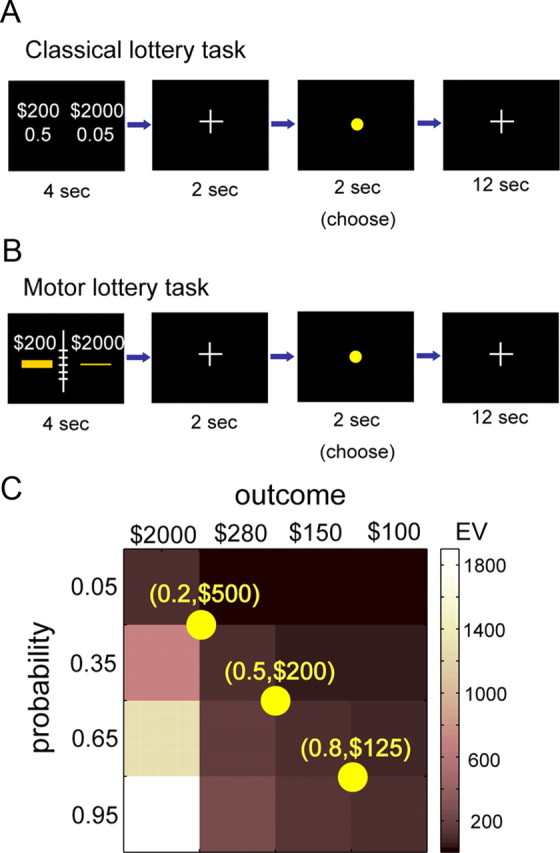Figure 2.

Experimental design. A, Trial sequence of the classical lottery task. A pair of classical lotteries presented for 4 s and conveying information about outcome and probability. A short fixation (2 s) followed the lottery presentation period. After the fixation, a yellow dot appeared on the screen for 2 s, during which the subjects had to indicate her choice by pressing one of two buttons. In particular, the subjects had to indicate whether she preferred the varying lottery to the reference lottery or not. The intertrial interval was 12 s. B, Trial sequence of the motor lottery task. The trial sequence was the same as the classical lottery task, and the subjects' task was the same: to choose between motor lotteries. A ruler was displayed at the center of the screen to serve as a reference to the subjects in judging the size of the targets attributable to difference in viewing conditions between the motor training session and the fMRI session. In both the classical lottery task and the motor lottery task, no chosen lottery was realized during the fMRI session. C, Lottery design. Every pair of lotteries consisted of a reference lottery and a varying lottery. The varying lottery was selected from the 4 × 4 outcome-probability matrix shown here. The color map represented the EV of the lotteries. There were three possible reference lotteries indicated by the yellow dots on the matrix. The diagonal entries of the matrix, and the reference lotteries, all had the same EV. The values are in NTD. 30 NTD is approximately US $1.
